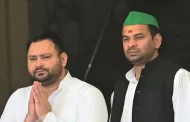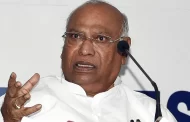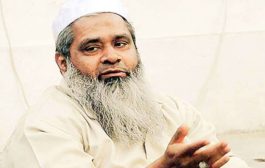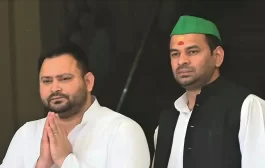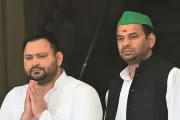
If the ongoing high decibel Mumbai civic poll battle pitch is anything to go by, on February 21, citizens of the maximum city will have to choose between Shiv Sena, “a party of extortionists” and BJP, “a party of goons”.
This is not the usual name-calling by the Opposition, but how allies, who share power in Maharashtra and the Centre, describe each other as the campaign for the country’s richest civic body heats up.
Chief minister Devendra Fadnavis has been called a “half-baked idiot” and Sena chief Uddhav Thackeray has won the sobriquet of being the “godfather” of mafias.
In the 25-year history of the saffron alliance in the state, forged under the Hindutva ideology, this is the lowest the parties have sunk to so far in their bid to gain control of Mumbai, a Sena bastion for the last three decades and a source of its resources.
And the BJP-led government, which banks on the strongest alliance-186 seats from BJP’s 123 and Sena’s 63-in the last 20 years, faces a crisis.
Both the sides have also made tactical breaches, which may make compromise difficult in future.
The Sena has flirted with BJP’s arch enemies-West Bengal chief minister Mamata Banerjee to oppose demonetisation and Gujarat Patidar leader, Hardik Patel over tie-up.
The BJP state unit has retaliated by accusing Mumbai’s first family of money laundering and “hafta vasooli (extortion)”.
So, how did the state of the alliance get so rotten?
The Third Wheel for BJP
After separately contesting the assembly polls, the results threw up a hung verdict: BJP had 122 seats and the Sena 63. But before the latter could react, Sharad Pawar’s NCP unexpectedly offered unconditional outside support to the former.
With NCP’s support, BJP came to power as Sena sat in the Opposition benches and sulked. Pawar’s support dramatically reduced Sena’s bargaining power, even when it wanted to join the government later.
“NCP’s role reduced our position in the political scheme. Since then, we have consistently been sidelined at the Centre and the state government by the BJP. For instance, with our 19 MPs, we deserved a better cabinet portfolio than the heavy industries. After all, the Telugu Desam Party (TDP), with 15 MPs, did get civil aviation,’’ said a Sena minister.
In the state too, Sena had hoped for better deal, but had to settle for five cabinet and minister of state posts, and later, two more junior ministerial posts post BJP’s defeat in Bihar polls.
In the last two years, the NCP has maintained a perception of being a standby ally that could step in to bolster the BJP government, if the Sena walks out any time. Much of this perception has been created by Pawar and Prime Minister Narendra Modi’s affable terms-on public display at several occasions. At the state level, the irrigation probe against Pawar’s nephew Ajit Pawar has made little headway.
“Sena looked at Maharashtra as their forte and thought they had monopoly on Marathi voters. The 2014 assembly polls results completely reversed the fortunes of the saffron allies and Sena could not come to terms with it,” says political analyst Surendra Jondhale.
While they had a honeymoon period with leaders like former Prime Minister Atal Bihari Vajpayee and Pramod Mahajan in the past, it now had to deal with Prime Minister Narendra Modi and Amit Shah, he said, adding, “NCP further soured the deal for them.”
Are the Bridges Burnt?
Despite the extreme positions taken, a post-poll alliance has not been ruled out by either party (unofficially).
Fadnavis, not keen on antagonising his ally, has said that Sena “continues to be our partner in the state. It has not yet backed out of the alliance and my government is stable”.
BJP’s confidence comes from the party top leadership’s belief that the Sena will not walk out of the government two years ahead of assembly polls in 2019.
“It is too long to stay out of power for two years. In that period, we could break their party,” a senior BJP minister told HT.
So, the Plan B is to wean 22 legislators from other parties offering them ministerial posts (nearly 16 will be up for grabs including 12 from the Sena quota and four remaining from BJP quota). The party believes it can ensure winnable candidates from across the three main parties: Congress, NCP and Sena.
But quitting their parties, and winning on lotus symbol, may not be an easy gamble to pull off two years after the Modi wave.
If BJP had hoped for NCP’s outside support, that now seems feeble. Maratha strongman, Pawar queered the political pitch again this week when he ruled out support if Sena pulled out. Instead, he said, BJP government had lost confidence of the people and that NCP would contribute to its fall if it came to such a scenario. He went on to predict mid-term polls post Mumbai civic polls.
However, there are enough indications that these plans may not be necessary.
Despite aggressive posturing, Uddhav Thackeray is likely to bide his time before pulling the rug. He told HT that a decision would be taken post Mumbai civic polls results even while admitting that Sena no longer had “any emotional connect or common issues with the BJP” and “the alliance was losing its meaning”.
At a rally in Pimpri Chinchwad this week, he further indicated a compromise, saying if the BJP government offered farmers a loan waiver, he was willing to support it.
But the final decision will be taken depending on the electoral results of the Sena in Mumbai, nine other big cities and 25 district councils that govern 75 per cent of the state’s rural population.
Mumbai results and the Uttar Pradesh assembly polls will redefine the saffron allies’ strategies and their bargaining power.
Even if Thackeray decides to stay in the government, which will be to buy time for political and organisational compulsions as the unhappy marriage gets more bitter.HT



